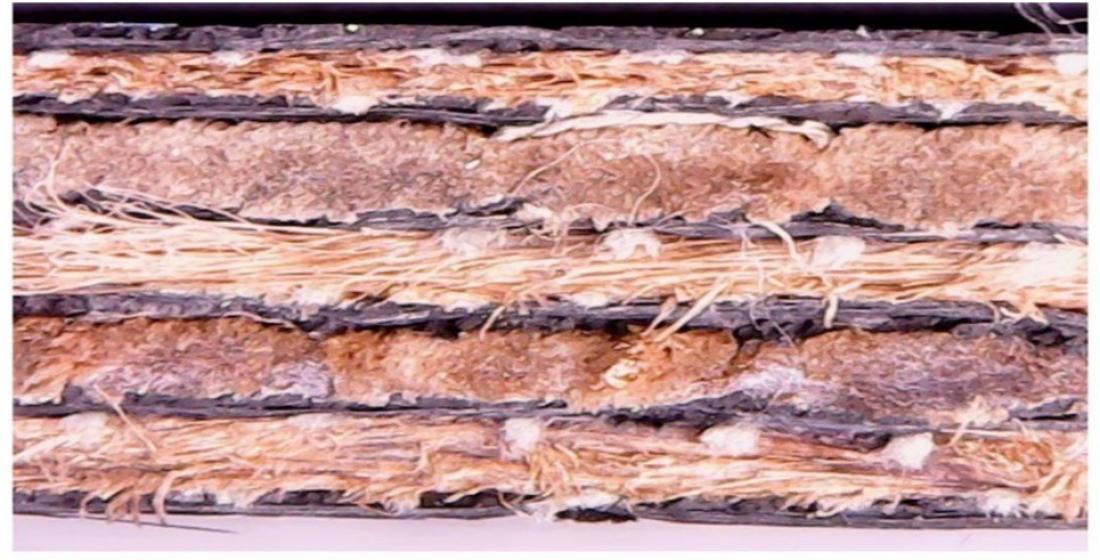Ramie/Fibre Glass Mesh Composites in Alternating Sequence
Fibre reinforced composites, known for their inherent brittleness and susceptibility to internal damage like delamination and matrix cracking under external transverse loading, present a significant challenge in maintaining structural integrity. This vulnerability often leads to the propagation of incipient cracks, compromising the overall damage resistance of these materials. In response to this issue, fibre hybridisation emerges as a promising strategy to enhance damage resistance by introducing high elongation reinforcements that can mitigate crack development.
In the context of this study, a specific approach was taken to address these challenges. The researchers opted for the incorporation of ductile fibre glass mesh (FGM) to create composites with a combination of ramie and FGM arranged in an alternating sequence. This innovative hybridisation aimed to leverage the high elongation properties of FGM to induce a synergistic effect, enhancing the overall damage resistance of the composite material.
One of the key aspects explored in this study was the impact of loading rate on the damage resistance properties of the hybrid composites. The findings revealed that the introduction of FGM, coupled with variations in laminate thickness, had a positive effect on both load-bearing capacity and deformation capacity. The hybrid composites exhibited improved toughness, and intriguingly, this enhancement was found to be sensitive to both the content of FGM and the rate at which the loading was applied.
The experimental results showcased that the highest energy absorption, a crucial indicator of damage resistance, was achieved at a moderate loading rate of 10 mm/min. This suggests that the performance of the ramie/FGM composites is optimized under specific loading conditions. The recorded energy absorption value of 114.9 J highlights the effectiveness of the hybridization approach in significantly improving the damage resistance properties of the composites.
In summary, the adoption of ductile fibre glass mesh in the fabrication of ramie/FGM composites, along with a meticulous examination of loading rate effects, demonstrates a successful strategy to enhance the overall damage resistance of fibre-reinforced composites. These findings contribute valuable insights to the ongoing efforts in developing advanced materials with improved mechanical properties for various engineering applications.
This study was successfully conducted by Associate Professor Shukur Abu Hassan (lead author and principal investigator) with co-workers, notably Dr Khoo Pui San (postdoctoral fellow), from Centre for Advanced Composite Materials (CACM), Universiti Teknologi Malaysia, Johor Bahru, Malaysia.. Prof Shukur has been working on finding new ways for using natural fibres for enhancing materials in the past 10 years. The findings of this study have been prsented at International Conference of Green Innovation 2023.
Newcastle University in Singapore researcher, Associate Professor Kheng Lim Goh, who is a visiting Research Associate of CACM as well as serving as Chief Technical Advisor for the Ramie/FGM composite study, sees this as a crucial step toward utilizing sustainable materials in FGM composites. He observed that the load-bearing and deformation capacity of hybrid composites improved with an increased number of layers, irrespective of the loading rate although the toughness of the composite was found to be loading rate sensitive, and the positive influence of fibre glass mesh properties on the composite properties became evident only at higher content. He anticipates future studies by the Shukur group, focusing on exploiting the fibre orientation of ramie fibres to address potential brittle final failures resulting from unidirectional fibre orientation.



